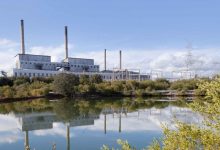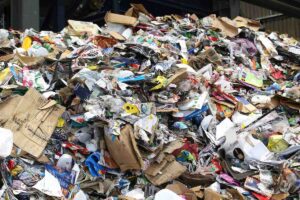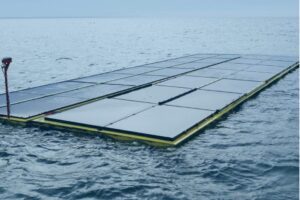Australia’s renewables sector has been doing the heavy lifting when it comes to reducing greenhouse gas emissions, but its still not enough to keep Australia on track for net zero emissions by 2050, new analysis shows.
The latest edition of the Australian Energy Emissions Monitor, produced by the Australian National University’s Dr Hugh Saddler, shows that virtually all of Australia’s emissions reductions over the last decade have come from the growth of renewables in the grid.
Electricity emissions have fallen by around 29 per cent since 2012, the report says, contributing to a 12 per cent overall reduction in Australia’s national emissions.
“The National Electricity Market is thus the only source of significant energy emissions reduction in Australia,” the report says.
“In the year to March 2022, grid scale renewable generation was just under 25 per cent of total generation, and all renewable generation, including rooftop solar was just under 34 per cent.”
Dr Saddler found that while the market share of renewables was increasing across all Australian states and territories, growth had been much slower in Western Australia – to such an extent that ongoing growth of the state’s oil and gas sectors meant has seen an overall rise in emissions over the last decade.
“In Western Australia, by contrast, energy emissions continue to increase, because growth in emissions from petroleum products and gas has outweighed very modest decreases in electricity generation emissions,” the report said.

Saddler pointed to the slower uptake of rooftop solar in Western Australia and the higher market share of gas generation, for contributing to the state’s slower clean energy transition.
Access to supplies of cheaper gas – which are largely the result of Western Australia’s gas reservation policy – had kept gas generators viable.
It suggests a perhaps perverse outcome of the gas reservation policy – designed to ensure gas producers make a certain share of their gas production available to local consumers – that is having an effect of slowing the uptake of renewable energy in Western Australia.
“It seems reasonable to deduce that access to low cost gas for electricity generation has been an obstacle to the wide scale adoption of grid scale solar generation in a state which is endowed with such an enormous solar resource,” the report says.
“Low cost gas is thus one of the main reasons that WA, unlike the rest of Australia, is increasing, rather than decreasing its energy combustion greenhouse gas emissions.”
“It is ironic that the Pilbara has been identified by potential investors as an ideal location for new ultra-large scale solar generation of electricity, to be either exported directly by cable or used to make hydrogen, while existing electricity consumers in that region continue to rely on gas generation,” it adds.
On the east coast, the report said there had been an evident split amongst NEM states when it came to the pace of their respective clean energy transitions.

Southern NEM states, covering South Australia, Tasmania and Victoria, had achieved higher rates of renewables uptake and were currently enjoying lower wholesale electricity prices, the report found.
However, New South Wales and Queensland had lagged behind in the switch to renewables. Both remained highly reliant on black coal power stations for the bulk of the power supplies, and were suffering through a recent spike in wholesale electricity prices.
“As a number of commentators have observed, there is an obvious division in the NEM between the “north” (NSW and Queensland) and the “south” (Victoria, South Australia and Tasmania), in terms of their respective electricity system transitions,” the report says.
“This division (or separation) is also seen in volume weighted average wholesale prices in 2021; in Victoria it was $51/MWh, in South Australia $53, in Queensland $66 and in New South Wales $72.”
“This split is also seen in futures prices; AER data show, that prices for Victoria are lower than for New South Wales and Queensland in every quarter out to 2025, and that is also the case for South Australia, with the exception of one quarter in 2024.”
“It is clear to see that both the speed and extent of the transition varies very considerably between the four states.”










